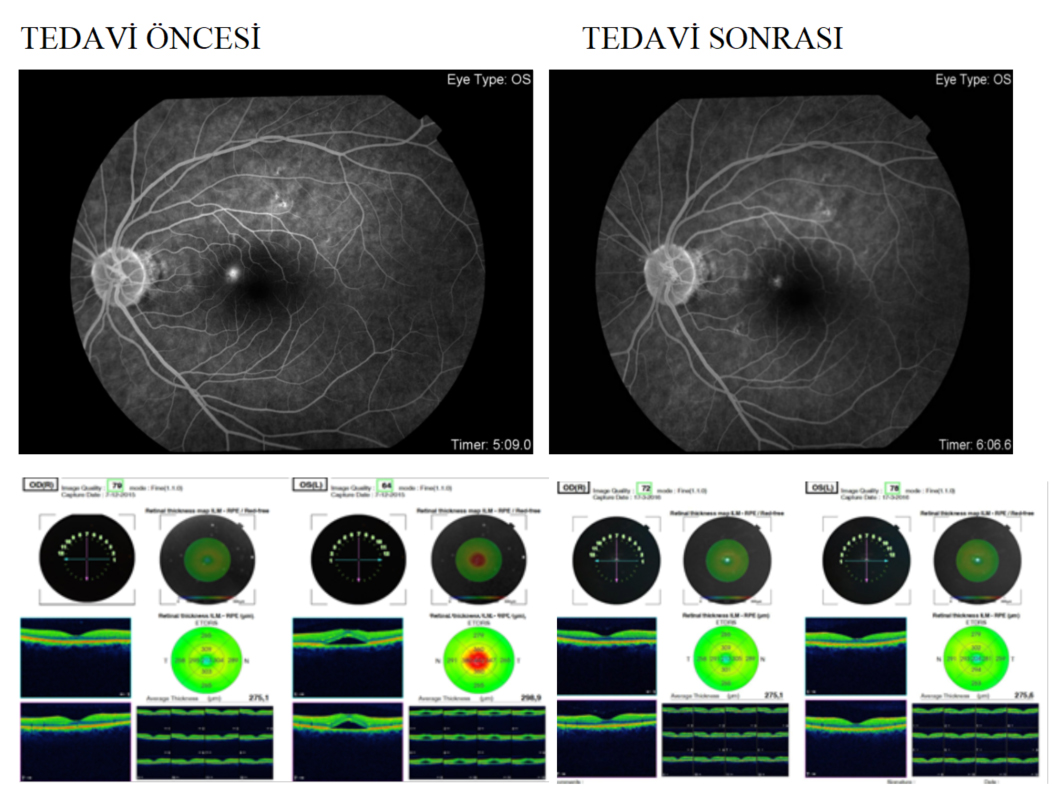MICROPULSE LASER
Micropulse Laser, a new technology in terms of laser treatments applied to the retinal layer, has been developed to minimize tissue damage. The working principle of this new laser application is to apply laser with very short pulses. In this way, it is aimed to cool the tissue in short intervals. Less tissue damage is provided by these short intervals, which allows the tissue to cool down. While energy reaches the tissue uninterruptedly during a laser pulse in traditional lasers, energy is sent in packets in micropulse or subliminal lasers.
CONVENTIONAL THERMAL LASERS AND THEIR EFFECTS
Conventional thermal lasers have been used safely and effectively in vascular diseases of the retina. Among the main retinal diseases in which laser treatment is applied:
- Diabetic retinopathy (retinal bleeding and obstruction due to diabetes)
- Hypertensive retinopathy
- Retinal vascular occlusion
- Retinal arterial macroaneurysm (RAM)
- Central serous retinopathy

Besides the beneficial effects of conventional thermal lasers, some side effects arise due to the enlargement or deepening of burns caused by heat (Figure 2). Among them:
Visual field defects (Figure 3)
Decreased color vision
Decreased contrast sensitivity (sharpness)
Formation of new vessels in the deep layers (choroidal neovascularization- CNV) and related bleeding
Wound healing (epiretinal fibrosis) can lead to wrinkles on the retinal surface and be a cause of crooked vision.
Retinal fluid accumulation due to excessive laser application (serous retinal detachment)
Due to these side effects and the fact that patients may feel pain due to the increase in temperature during application, subthreshold lasers have been developed with shorter laser pulses and that can act without burning the applied tissue. Subliminal or micropulse lasers are other names of subthreshold lasers
WORKING PRINCIPLES AND APPLICATION AREAS OF MICROPULSE-SUBLIMINAL LASERS
These new technology lasers are lasers with very short pulses and allow the tissue to cool down in between the pulses. These lasers can also be called “pulsed” lasers. Energy reaches the tissue uninterruptedly during a laser pulse in conventional lasers, whereas energy is sent in packets (including on and off times) in micropulse or subliminal lasers (Figure 4). This allows the support cells called retinal pigment epithelium (RPE) just below this layer to be stimulated without causing an increase in temperature in the very sensitive retinal tissue (Figure 5). As a result of this stimulation, some special substances are secreted at the cellular level and leakage, bleeding, and etc. in the diseased area will heal. This effect is called "biostimulation" (Figure 6).
ADVANTAGES OF MICROPULSE-SUBLIMINAL LASERS
Can be applied without leaving any traces on the retina unlike conventional lasers. Cold lasers do not damage the retina.
Re-application is possible to the same area over and over again: Micropulse-subliminal lasers can be safely applied to the same area over and over again, as they do not leave any visible damage to the retinal tissue. This increases the effectiveness of treatment.
Effective in all kinds of vascular retinal diseases: It is applied effectively and reliably in many vascular diseases of the retina such as diabetes, retinal vascular occlusion, retinal layer separation (SSR), retinal aneurysms.
Can be combined with intraocular injections: Cold lasers together with intraocular injections can be applied in the treatment of many retinal diseases, which increases the effectiveness of the treatment and enables us to obtain better visual results.

